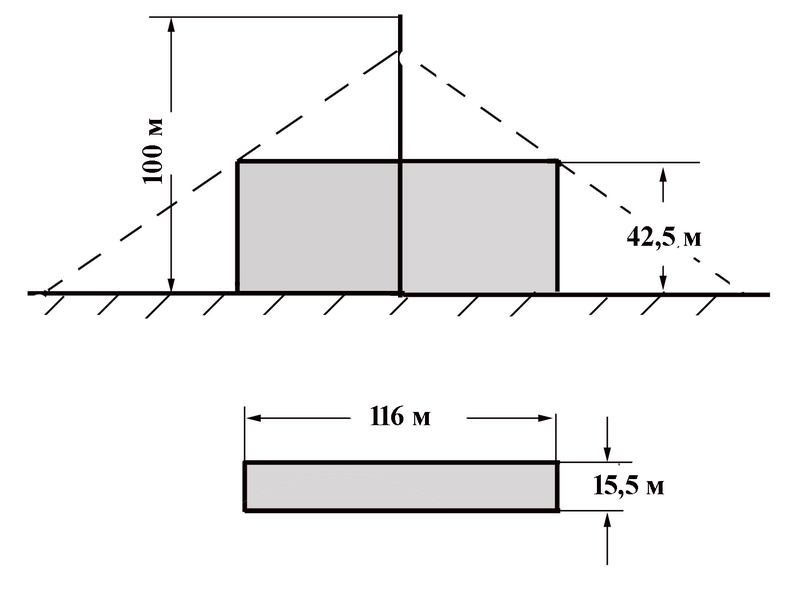The answer to this question can already be found from the written before. Suppose that the object is entirely located in the protection zone of a free-standing lightning rod, as shown in the figure. The height of the rod lightning arrester is h = 100 m, the lightning conductor ensures the reliability of protection P = 0.9, and, therefore, the probability of a lightning breakthrough to the object (Ppr = 1 - P) should not exceed 0.1.

The software calculation for the building shown in the figure gives Ppr ≈ 0.055. “Not so bad,” almost every reader will say. A double safety margin will not hurt anyone, and the error in calculating reliability at the level of a significant figure is quite a common thing for lightning protection. Probably, because of such a smallness, it is not worth to seriously criticize the protection zones, let alone refuse form them in the design calculations.
So it would be necessary to behave like that if you forget that the top of a free standing lightning arrester rose 100 m above the ground level and increased the height of the structure by almost 60 m, thus ensuring that it received a 5-fold fraction of lightning compared to a building without a lightning arrester. Let us remind. that an increase in the number of lightning strikes leads to almost the same increase in the number of dangerous electromagnetic pickups, because, intercepting lightning, the lightning arrester changes the level of electromagnetic effects a bit. For modern technology is more than important.
It is the forth part from the cycle of articles "Everything about lightning rod protection zones". In order to read the whole material you need to register on the site.
If you have questions on calculation of lightning protection or grounding – contact our ZANDZ Technical Center for help!
See also:

